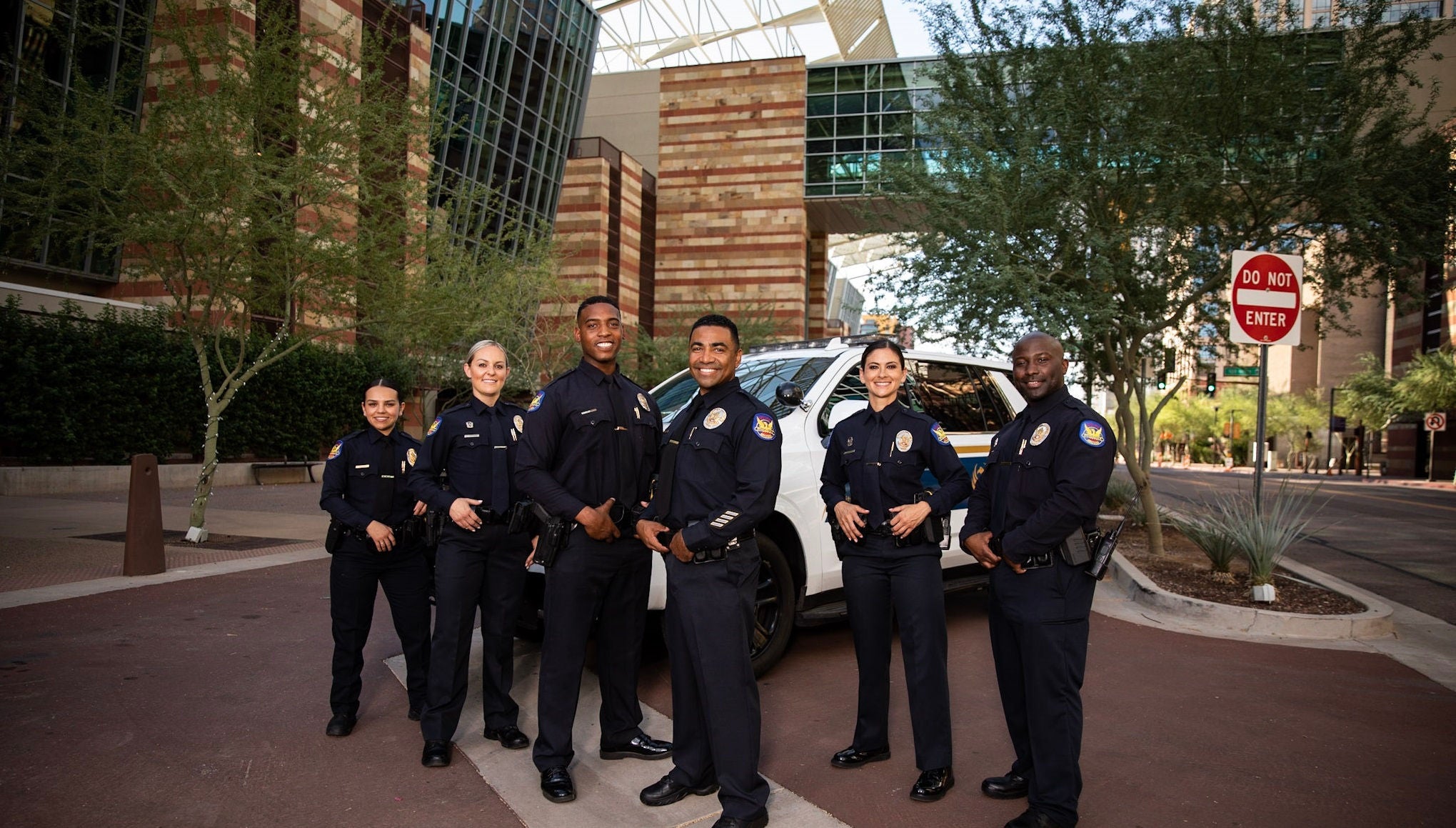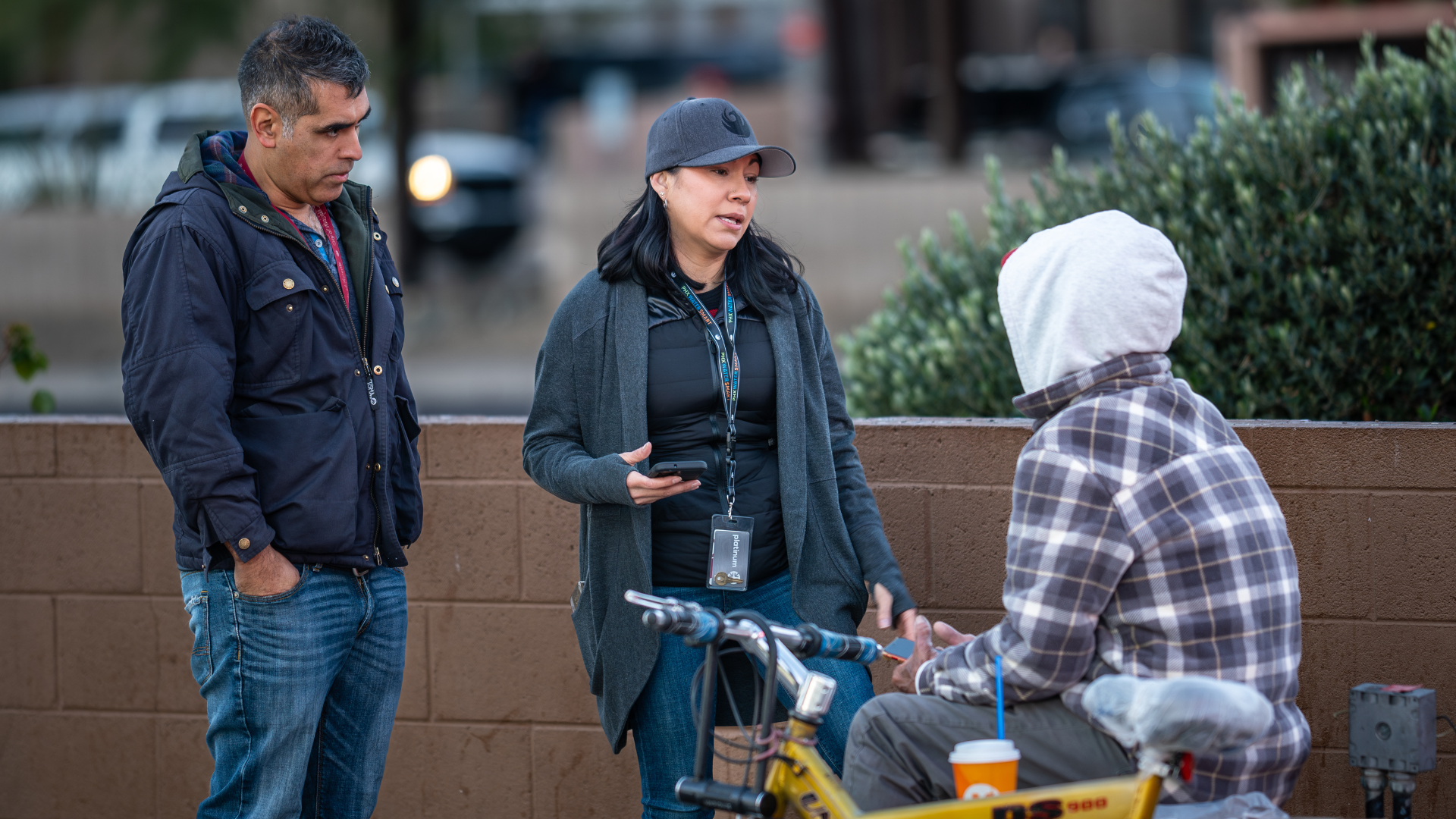Phoenix launches a Citywide food drive to assist residents experiencing food insecurity during the holidays.

Overview
The Phoenix Police Department is a forward-thinking, innovative law enforcement agency proud to serve and protect those who live, work, and visit the City of Phoenix.
We are accredited through the Arizona Law Enforcement Accreditation Program, which promotes the highest standards of professionalism, integrity, and effectiveness in law enforcement.
The department enjoys an incredible partnership with our community, working together to protect life and property, prevent and reduce crime, and seek justice for crime victims. We strive to be a self-assessing, self-correcting agency with continuous improvement at the core of everything we do.
I Want To ...
-
File a Police Report
Easily file police reports online with Phoenix Police's public safety services. Access reporting forms and streamline your reporting process today.
-
Obtain Property
Discover how the Property Management Unit of Phoenix Police handles property crimes and manages evidence efficiently.
-
Request a Public Record
Access Phoenix police public records and crime stats for insights into local safety and crime trends.
-
Find My Precinct
Discover your local police precinct in Phoenix for public safety services and support. Find contact details and resources to stay informed and secure.
-
Get Involved
Enhance community safety and trust with the Phoenix Police Community Engagement Bureau's initiatives and partnerships.
-
Submit a Compliment or Complaint
Submit compliments and complaints about Phoenix police services online. Ensure your voice is heard in public safety matters.
-
Join PHXPD
Discover the world of opportunity awaiting you at the Phoenix Police Department. Hiring sworn and professional staff.
-
Explore Department Policy
This online resource provides public access to the guidelines that shape department operations, promote accountability, and ensure transparency.
Department Resources and Information
Access essential documents, forms, and updates from the Phoenix Police Department. Quickly find answers to common questions, connect with key services, and explore resources designed to keep you informed and engaged with local law enforcement.
-
Media Relations
Connect with Phoenix Police media relations for press inquiries and updates. Access resources and contact details for media professionals.
-
Continuous Improvement Resources
Explore Department of Justice community resources for support and guidance on safety, justice, and community engagement in Phoenix.
-
Transparency
Explore our commitment to transparency and accountability, including officer involved shooting information, with detailed crimes stats.
-
Victim Rights and Services
Victims have rights. The City of Phoenix and Maricopa County can direct you to the best support depending on the type of crime.
-
Crime Maps and Stats
Explore Phoenix crime maps and stats for insights on safety, police data, and crime trends to stay informed about your community.
-
Missing and Unidentified Persons
Discover how the Family Investigations Bureau aids in finding missing persons in Arizona through dedicated police investigations and resources.
-
Vehicle Towing Information
Find out where your car was towed in Phoenix with vehicle towing information from the Police/Public Safety Services.
-
Vehicle Impoundment Information
Find out if your car is impounded and learn how to retrieve it with Phoenix Police's vehicle impoundment information and public safety services.

Crime Reduction Plan
The plan focuses on preventing and controlling criminal activity in Phoenix, while striving to enhance the quality of life for both businesses and citizens.


Now is the time to join the Phoenix Police Department!
The Phoenix Police Department is the highest-paying law enforcement agency in Arizona! A recruit's starting salary is $33.01/hour ($68,661 annually). An officer's maximum salary is $50.74/hour ($105,539 annually). With differential pay, overtime, a bilingual language bonus, and a $7,500 hiring bonus, your earning potential is even higher. Besides a generous salary, enjoy other fantastic benefits, including tuition reimbursement, a retirement plan, and much more.

Contact the Police Department
Call 911 if you have an emergency or if you know of a threat to public safety.
Call Crime Stop at 602-262-6151 to file a police report or have an officer dispatched.
Our contact form is for questions and answers only. We cannot take reports or dispatch officers through the internet or email. Our email is not monitored 24 hours a day, seven days a week.



